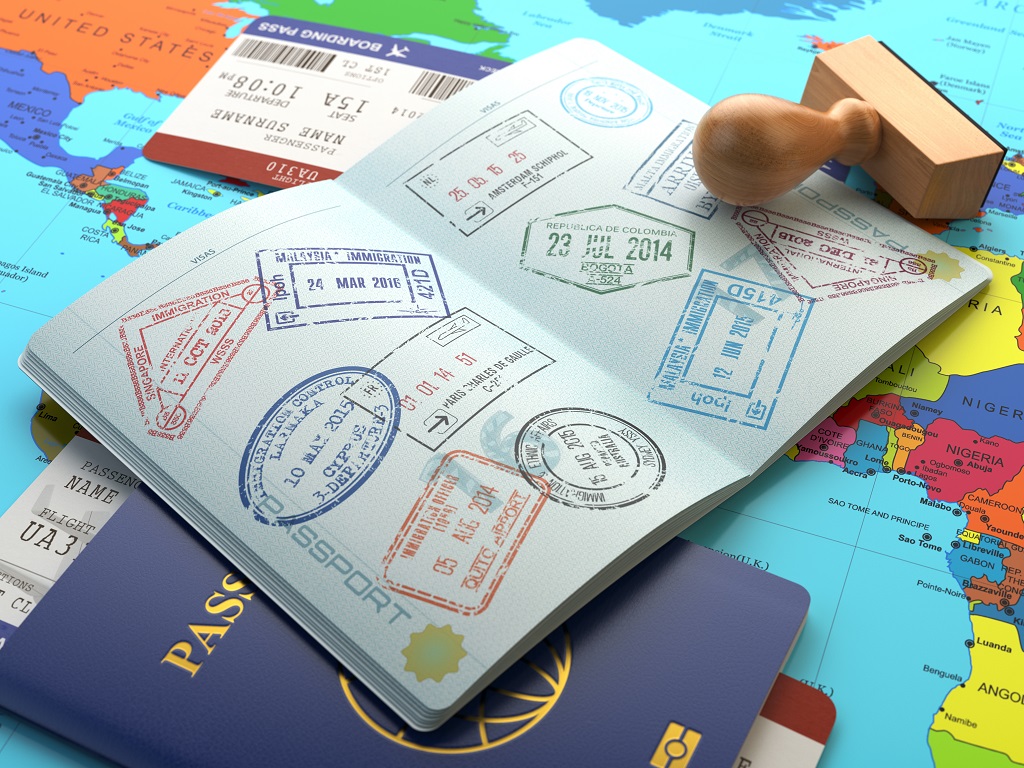Fortunately, more and more countries are gradually opening their borders to international visitors again, as increasing numbers of people get vaccinated against COVID-19. As such, like many of us, you may be itching to hop a plane and return to exploring, whether that’s indulging your foodie side in Colorado, marvelling at the beauty of Lebanon or trying a traditional Al Soussi breakfast in Beirut.
Notably, though, before you pack your suitcase and set out into the big, wide world, it’s worthwhile to check out the visa requirements for your destination. After all, depending on both your nationality and where you’re travelling to, you may be visa-exempt or require an entry pass, whether that’s a traditional embassy visa, a Visa on Arrival (VoA) or even a new-fangled Electronic Visa (eVisa).
With this in mind, to help you get this pesky paperwork out of the way ahead of your next trip, so you can get on with seeing the sights and trying the local dishes, here are six tips to apply for your travel visa.
- Check That Your Passport Has at Least Six Months of Validity Remaining
Wherever on the globe you’re going, you’ll likely need a passport that remains valid for at least six months, as most countries require this as a prerequisite to entry. As such, find your passport, blow off the dust it’s accumulated in the 18 months or so since the pandemic started, and see if it has six months of validity left. If not, you’ll likely have to apply for a new passport before you can enter your next delicious destination.
- Research the Visa Requirements for Your Nationality for Where You’re Going
Next, it’s worthwhile visiting the official tourism page or the government website of the country you’re visiting, to find out exactly what are the visa rules for the passport you’ve got. Importantly, misinformation abounds online, so it’s a bright idea to only use official sources to do this. Otherwise, the pages you come across may be incorrect or out of date. With any luck, you’ll be visa-free for your destination, which will make organising your journey easier!
- If You’re Visa-Exempt, Find Out the Conditions for Your Entry
Even if you don’t need a visa for where you’re going, there may be conditions that you need to be aware of. For example, the United States permits the citizens of 39 countries, such as the UK and Australia, to enter without a visa. Yet passport holders from these 39 countries must still obtain a so-called visa waiver, called an ESTA, to enter the land of apple pie, tater tots, barbeque ribs and grits. Similarly, even if you’re visa-exempt, you’ll likely be allowed to stay for up to a set number of days, so confirm this in advance.
- If You Require a Visa, Find Out What Type You’re Eligible For
As we mentioned briefly above, all travel visas are not born equal. Instead, generally speaking, there are three kinds, so it’s useful to find out what type you can apply for. Here’s a quick overview:
- Traditional embassy visa. This may be the sort of document that springs to mind when you think of applying for a visa. In this case, you visit the nearest embassy or consulate of the country you’re visiting, fill in the forms in person, and you’re then given a paper document to present when you arrive at your destination at customs. This old-fashioned visa is increasingly being replaced by the next two kinds.
- Visa on Arrival (VoA). You apply for a VoA just after you arrive at your destination, usually after you get off the plane. In this case, you fill in the application form and provide any required supporting documents, like a passport photo, and your entry pass is then approved and given to you there and then. The clear advantage of a VoA is that it saves you from having to repeatedly visit the embassy before you go.
- Electronic Visa (eVisa). An eVisa is a digital travel document that you apply for and obtain entirely online in advance of your trip. Typically, you fill in a website form and, once approved, the eVisa is delivered to your email inbox either for you to show on your smartphone or print and take with you. The benefit of the eVisa over the other two types of visa is that you’re both saved from visiting the embassy, and you know you’re approved to enter your destination before you set off. You can find out more about these on a visa website like Byevisa.com.
- Look Up Any Supporting Documents You’re Required to Show
As well as a passport with six months of validity left, you may need to show other documents to gain entry to your destination, so research these in advance. The requirements vary widely around the world, yet some typical supporting documents include:
- A scan or photocopy of your passport’s photo page.
- One or two recent, colour passport photos.
- Return or onward flight tickets.
- Proof of accommodation, like a hotel booking or a friend’s address.
- Evidence of other bookings, such as for restaurants or tourist attractions.
- Proof that you can financially support yourself on your trip, like bank statements.
- Travel insurance.
- Any required vaccinations, most commonly for yellow fever.
You may need to show these documents either as part of your visa application or when you arrive.
- See Whether You Can Extend Your Visa, and Make Sure You Exit While It’s Valid!
Many destinations around the world allow you to extend your visa, so if you’re having the time of your life, find out if you can stay longer. Usually, you’ll have to visit a local immigration office and pay a fee to do so. Even then, though, it’s important to return home while your visit visa remains valid! This will save you from having to answer any questions, or even paying a fine, when you exit through customs.
These tips should come in useful, then, to organise the visa for your post-COVID travels abroad. Whether you’re tasting the cuisine of Michigan or getting your teeth into a frog burger in Paris, enjoy the sights, delights and flavours of where you travel to next!






































